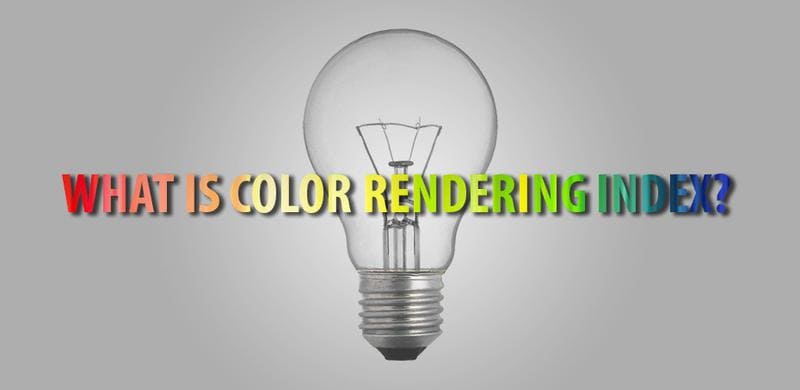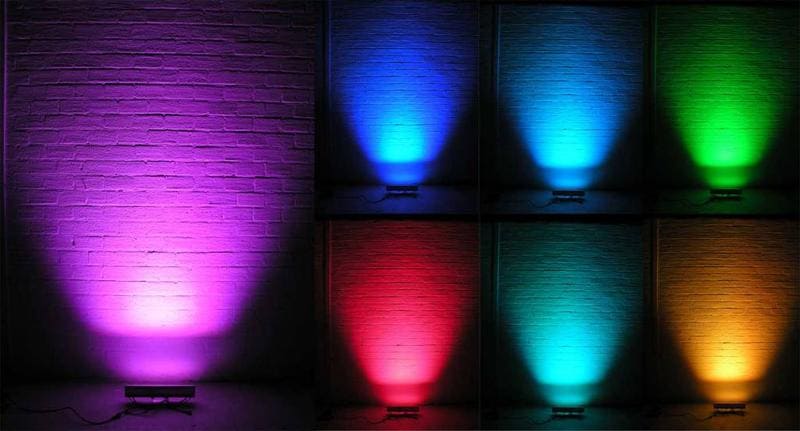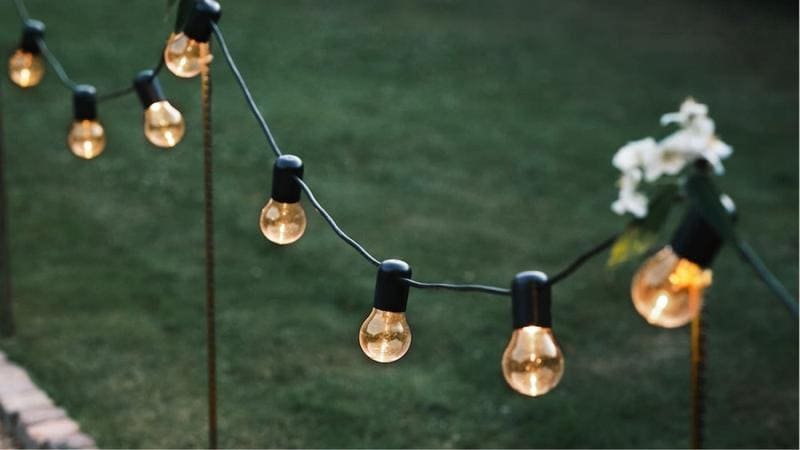Lighting can transform any space, but it’s not just about choosing the brightest bulb. Ever wonder why one room feels cozy while another seems harsh and glaring? The answer lies in the beam angle. Whether you’re creating a warm ambiance for your living room or focusing light on a specific area in your office, understanding beam angles is the key to achieving the right vibe. In this guide, we’ll dive into the magic of beam angles and show you how to make every room in your home or business shine—literally.
What Is a Beam Angle in Lighting?
Ah, the mysterious world of lighting, where brightness meets geometry! Let’s dive into the dazzling depths of the beam angle and figure out why it’s not just for lighting nerds, but actually quite useful for the rest of us.
Definition of Beam Angle
Picture this: a lightbulb doesn’t just sit there glowing—oh no, it sends out its beams, and how those beams behave is what we call the beam angle. Think of it as the diva-like spread of light from a bulb, strutting its stuff across the room. The beam angle is essentially the light’s stage presence, dictating how far and wide it shines, measured in trusty degrees.
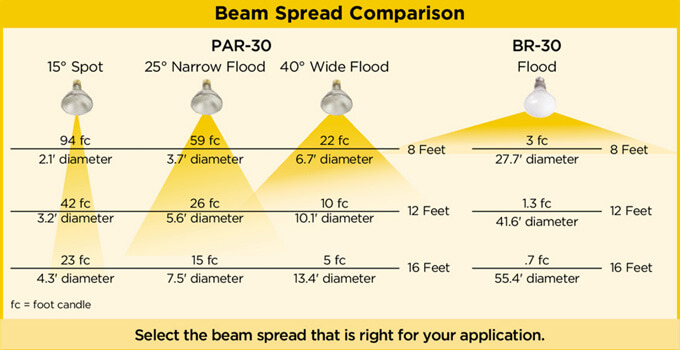
Measures Light Spread from a Source
Imagine your bulb is a tiny sun, and the beam angle is its cosmic reach. The wider the beam angle, the more it spreads out, blanketing everything in a gentle glow. Conversely, the narrower the angle, the more intense and focused the light becomes, like a spotlight on a Broadway star.
Narrow Beam Angles = Higher Intensity, Focused Light
If your lighting plan is all about precision, narrow beam angles are your best friend. These beams are laser-focused, throwing light like a punch to a specific spot. Less spread, but who cares when you can blind a squirrel at fifty feet? Whether you’re highlighting artwork or trying to make sure no one misses your perfectly curated bookshelf, narrow angles bring drama.
Wider Beam Angles = More Spread-Out, Softer Light
On the flip side, wider beam angles are the friendly neighborhood lighting option. They spread out like a warm hug, illuminating larger areas in a softer, less aggressive way. Perfect for those moments when you’re less about drama and more about vibes. It’s the difference between a solo spotlight and a disco ball—it’s all about what you’re going for.
Measured in Degrees
Beam angles are rated in degrees, ranging from the sharp, narrow 10° angles that could cut glass with their focus, to the super-spread-out 120° angles that light up the whole room like a well-lit stadium. Degrees are the magical numbers that tell you how much light coverage you’re getting, so next time you buy a bulb, don’t just think about wattage—think about your room’s beam angle destiny.
Lighting isn’t just about flicking a switch. It’s about mastering the glow.
Why Beam Angle is Important
Ah, the beam angle—the unsung hero of your lighting setup. It’s more than just a number on a box; it’s the secret sauce that can turn your room from a harsh interrogation chamber into a cozy nook or from a dim cavern into a spotlight-ready stage. Let’s shine some light (pun intended) on why this angle matters so much.
Determines Light Coverage Area
First things first—beam angle dictates how much space your light covers. A narrow beam angle is like a laser-focused sniper, lighting up a small, concentrated area. Want to spotlight that perfect piece of art in the corner? Narrow beam. But if you’re lighting up a whole room like you’re hosting a dinner party for 40, you’re going to want a wider angle that spreads the glow around like butter on toast.
Narrow vs. Wide Coverage
Narrow beams mean focused light, perfect for spotlighting or highlighting small areas with intense illumination. On the flip side, wide beams cover large areas but with a softer touch. It’s the difference between throwing a flashlight beam across the yard versus lighting up your living room with a chandelier.
Efficient Lighting with Minimal Fixtures
Here’s where beam angles really earn their keep. With the right angle, you can light up an entire room without needing 27 different lamps. Less clutter, fewer fixtures, and you don’t have to wrestle with extension cords—what’s not to love?
Affects Room Ambiance
Lighting sets the mood faster than an awkward first date. And beam angle? It’s your lighting’s wingman. Whether you want a room to feel intimate or open, the angle you choose makes a massive difference in the vibe.
Narrow Beam Angles Create Dramatic, Focused Lighting for Mood Setting
Narrow beams are the drama queens of lighting. They focus like a hawk and create intense pools of light, ideal for making a space feel edgy, moody, or downright theatrical. Think of it like putting your favorite décor piece under a spotlight—suddenly, it’s the star of the show.
Wide Beam Angles Produce Soft, Even Light for a Relaxed Atmosphere
On the other hand, if you’re more about a calm, laid-back atmosphere, wider angles are your jam. They distribute light evenly across the room, giving off a soft, diffused glow that says, “kick back, relax, and maybe read a book or sip some tea.”
Enhances Energy Efficiency
Who doesn’t want to save a little on their electric bill while also saving the planet? Beam angles can help you do just that.
Proper Beam Angle Reduces the Need for Additional Lighting Fixtures, Lowering Energy Consumption
With the correct beam angle, you’ll cover more area with fewer lights. Fewer lights mean less energy wasted, which means you’re doing your part to keep the lights on without single-handedly fueling the power grid. Efficiency never looked so bright.
Improves Visual Comfort
Good lighting isn’t just about looking good—it’s about feeling good, too. The right beam angle can drastically reduce the things we all hate: glare, shadows, and that weird “I can’t see my screen because the light is in the wrong place” frustration.
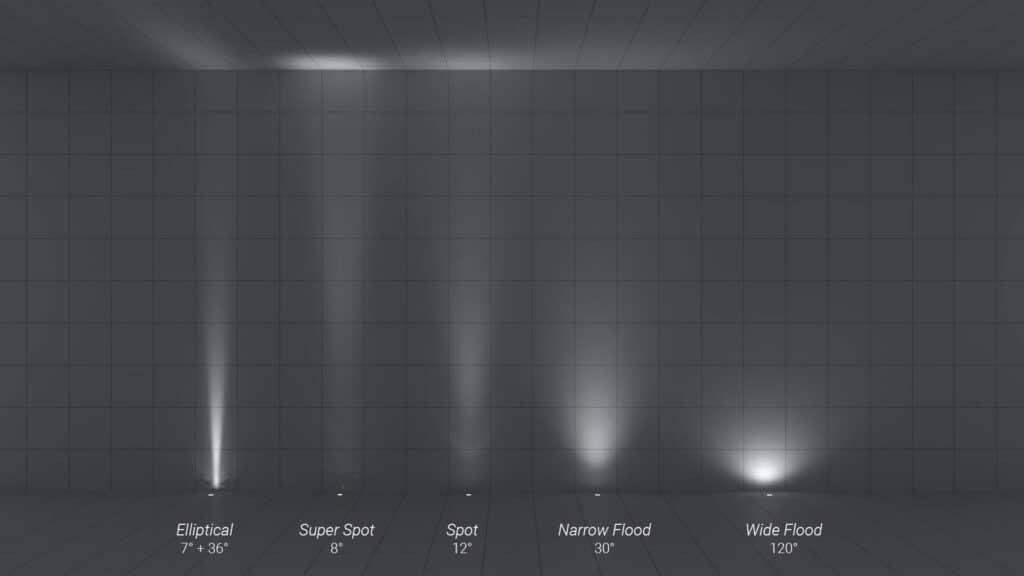
Helps Prevent Glare and Shadows, Offering Better Visibility and Reducing Eye Strain in Workspaces
Properly directed light ensures you won’t be squinting into oblivion or cursing the dark spots in your workspace. Whether you’re in an office, kitchen, or reading nook, the right beam angle helps you see clearly without straining your eyes—or your patience.
Customization for Different Tasks
Not all lights are created equal, and not all lighting tasks are the same. Reading a book? Totally different lighting is needed than trying to chop veggies without losing a finger.
Beam Angle Selection Helps in Tailoring Lighting for Specific Tasks, Improving Functionality for Various Settings
Choose narrow beams for task lighting—perfect for reading, working, or food prep. Wide beams are ideal for general lighting, creating a balanced backdrop for all those moments in between. With the right angles, your lighting game is adaptable and ready for anything life throws your way.
So, beam angles? Not just some technical mumbo-jumbo, but a key player in your lighting strategy. Shine on.
How to Measure Beam Angle
So, you’ve heard all about beam angles, but now you’re wondering, “How do I actually measure this mystical thing?” Don’t worry—measuring a beam angle isn’t as complicated as solving world peace, but it does involve a little trigonometry. But hey, if high school math taught us anything, it’s that those formulas might come in handy one day. Well, today’s that day!
Trigonometric Formula for Calculation
Ready to channel your inner mathematician? The beam angle is all about the relationship between the light source and how that light spreads. And here’s the magic formula that can unlock the secrets of beam angles:
Formula: Angle = 2 * Tan-1 [Beam Spread / Light Distance]
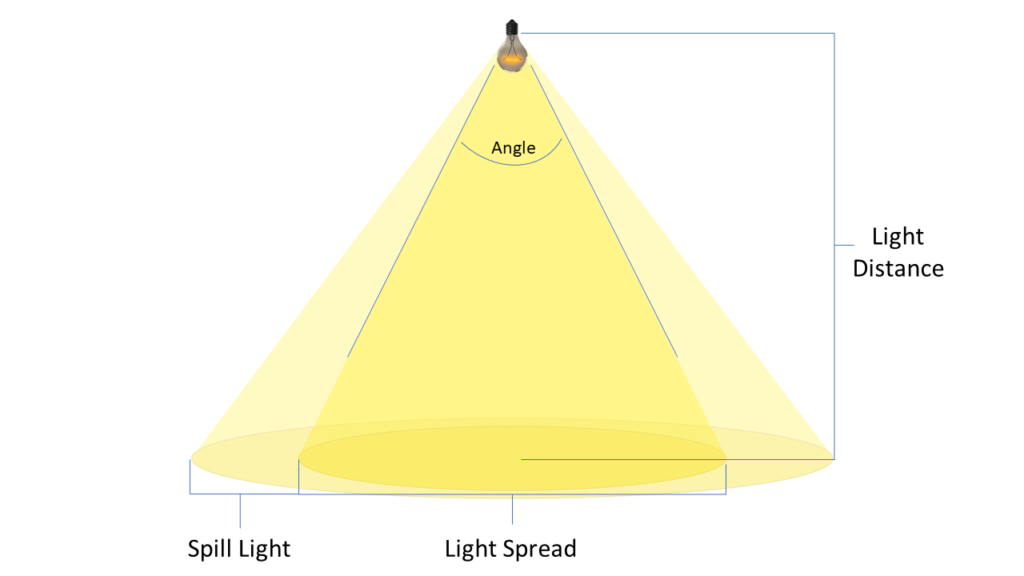
Wait, what now? Don’t panic—it’s simpler than it looks. The beam spread is essentially how wide the light spreads out from its source. Light distance? That’s how far away the light is from the surface you’re trying to illuminate. Put those two measurements into this nifty formula, and boom—you’ve got your beam angle.
Explanation of Lumens, Lux, and Foot Candles
Now, to add some extra flair to our lighting knowledge, let’s chat about lumens, lux, and foot candles. Don’t worry, no feet or candles are involved (unless you’re going for some very ambient lighting).
Lumens: This is the total amount of light that a bulb emits. Think of it as the sheer wattage of brightness, not how far it spreads, but how much it throws out there. The more lumens, the brighter the light. Simple.
Lux: Enter lux—the sophisticated cousin of lumens. Lux takes the amount of lumens and divides it by the area the light is covering. So, it’s all about the intensity of the light hitting a surface. Lumens might be the party animal, but lux is the one who cares about where the party is happening.
Foot Candles: Last but not least, foot candles, which is just a fancy term for lux but measured in feet instead of meters. One foot candle is one lumen per square foot, and it’s mostly used by people who want to sound fancy when talking about light levels.
Now you’ve got the formula and the lingo down, you’re basically a lighting wizard—capable of calculating and commanding beam angles like nobody’s business. Shine on!
Factors for Choosing the Right Beam Angle
Ah, choosing the right beam angle—it’s like picking the perfect pair of shoes. You’ve got to find the one that fits your space, your style, and your lighting vibe. No pressure, right? Here’s a breakdown of the factors that’ll guide you to lighting success.
Building Type
The first question you’ve got to ask yourself is: where am I lighting up? A cozy living room or a sprawling office space? The answer changes everything.
Residential: Uniform Illumination with Wider Angles
In residential spaces, we’re usually aiming for that smooth, uniform light that makes the whole room feel cozy and well-lit. You’re not trying to spotlight the family dog—you’re lighting up the whole space. This is where wider beam angles come in, casting their glow like a friendly hug over the room.
Light Fixtures
Not all light fixtures are created equal, and the fixture you choose can change how your beam angle behaves.
Pendant Lights vs. Recessed Lighting
Picture this: a pendant light hanging down over your dining table—fancy, right? It’s going to tighten up your beam angle, focusing that light down like a boss. Now think of recessed lighting, snug in the ceiling, beaming its light over a wider area. That’s the beauty of fixtures—they control where the light goes, so choose wisely!
Lighting Type
The type of lighting you’re after plays a major role in deciding your beam angle. It’s not just about brightness—it’s about how you want the light to work for you.
Ambient Lighting: Wide Beam Angles
Ambient lighting is the MVP of lighting styles. It’s all about giving the room an even glow, with no one corner left in the shadows. For this, wide beam angles are your go-to, spreading soft, diffused light all over the place like it’s throwing a party for every square inch of the room.
Accent & Task Lighting: Narrow Beam Angles
Need to light up that gallery wall like it’s on display at the Louvre? Or maybe you’re aiming for functional lighting that helps you read without giving you a headache. Narrow beam angles are the star here, offering focused, pinpoint lighting that gets the job done with flair.
Ceiling Height
Ah, ceiling height—the unsung hero of lighting decisions. How high your ceiling is will drastically change what kind of beam angle you need.
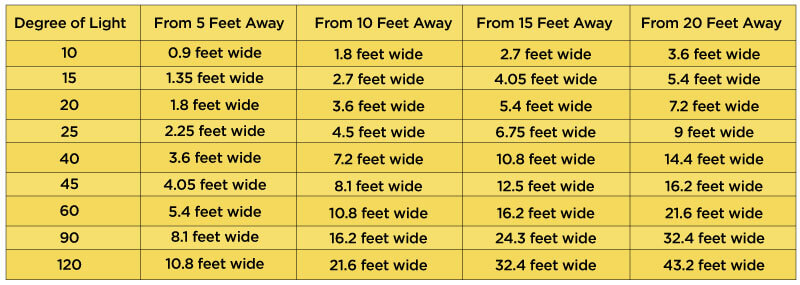
Higher Ceilings Require Narrower Beam Angles
Got ceilings that soar? You’re going to need a narrower beam angle to make sure the light reaches all the way down to where the action is happening. A wide beam will just get lost in the vastness, leaving your floor looking like the dark side of the moon.
Residential vs. Commercial Ceiling Heights
Residential buildings usually have lower ceilings (unless you live in some ultra-chic loft, in which case, lucky you). So, wider angles work best here to blanket the space in light. Commercial spaces, though, often have towering ceilings that demand narrow, intense beams to ensure nothing is left in the shadows.
Room Size
Size matters—at least when it comes to lighting. The bigger the room, the bigger your beam angle needs to be (usually).
Larger Rooms Need Wider Beam Angles
If you’re lighting up a grand room, you’ll need a wider beam angle to make sure the light spreads evenly and covers every nook and cranny. Think open-plan spaces, living rooms, or even those gigantic bathrooms that make you feel like you’ve stepped into a spa.
Smaller Rooms Benefit from Narrow Beam Angles
On the flip side, smaller rooms are the perfect candidates for narrow beam angles. They focus the light where it’s needed without overwhelming the space. Ideal for hallways, closets, or that reading nook where you want some cozy, concentrated glow.
Color Temperature
Color temperature is like the cherry on top of your lighting decisions. It can completely change how the beam angle feels in your space.
Cooler Temperatures with Narrow Beams Create Sharper, More Focused Light
Want a space that feels crisp and modern? Cooler color temperatures paired with a narrow beam angle create sharp, focused light that highlights every detail. Perfect for task lighting, or when you want a room to scream “sleek.”
Warmer Temperatures with Wider Beams Create a Softer Ambiance
If you’re more about creating a soft, inviting atmosphere, then warmer color temperatures with wide beam angles are where it’s at. This combo washes the room in a golden glow, making it feel like a cozy sanctuary rather than a clinical office.
So, when you’re choosing your beam angle, think about these factors. You’ll go from lighting newbie to illumination genius in no time.
Which Beam Angle to Choose
Choosing the right beam angle is like finding the perfect pair of sunglasses—get it wrong, and you’ll be squinting in discomfort. Get it right, and your space will be perfectly lit, making you look like a lighting genius. So, whether you’re illuminating your cozy living room or a sprawling warehouse, here’s your guide to beam angle brilliance.
Residential Buildings
Let’s face it: homes need lighting that’s functional, flattering and doesn’t make your guests feel like they’re under interrogation. Here’s how to get it just right.
Medium Beam Angle (40°-60°) for Most Rooms
For your average bedroom, kitchen, or hallway, a medium beam angle is your best friend. It provides just the right balance between coverage and intensity—enough light to see where you’re going, but not so much that it feels like you’ve wandered onto a film set.
Wider Angles for Living Rooms, Narrower for Staircases and Closets
Living rooms are the heart of the home, so they need to feel open and inviting. A wider beam angle will spread light around like a warm hug. Meanwhile, in smaller, more functional areas like staircases and closets, you want something a little sharper—narrow beam angles will give you that focused, useful light you need to avoid tripping over your shoes.
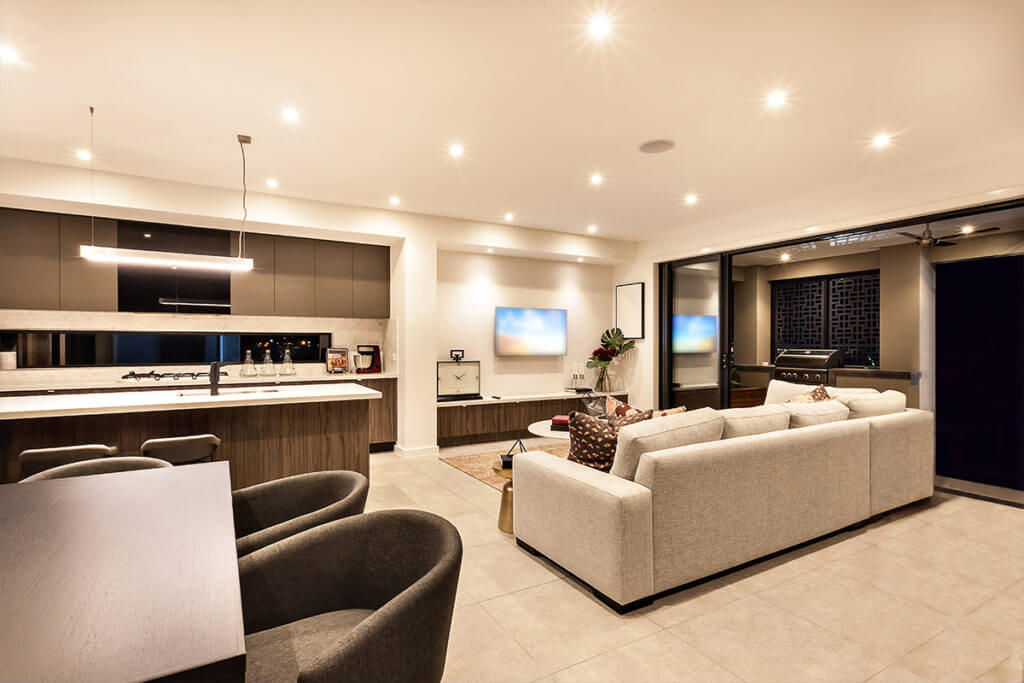
Narrow Beam Angles (~25°) for Spotlighting Artwork or Specific Décor Pieces
Got a fancy painting or a sculpture you want to show off? Narrow beam angles are perfect for creating dramatic, focused lighting that draws all eyes to your masterpiece. It’s like turning your home into a mini art gallery, without the snobby curators.
Very Wide Angles for Outdoor Lighting to Ensure Broad Coverage in Patios or Gardens
When it comes to outdoor lighting, go big or go home. Very wide beam angles are ideal for lighting up your patio, garden, or any outdoor space. You want broad, even coverage here—no dark corners where mysterious critters could be lurking.
Commercial Buildings
Commercial spaces have different vibes and different lighting needs. Whether it’s for customers, employees, or fine art enthusiasts, you’ve got to nail the lighting if you want to set the right mood.
Retail Stores: Narrow Angles for Display Cases, Wider for Mannequins
Retail lighting is all about showcasing the goods. Use narrow beam angles to spotlight those delicate display cases, making jewelry or electronics sparkle like they were sent from the heavens. For mannequins, you’ll want a wider beam to give them that all-over glow and make those outfits look irresistible.
Restaurants: 25° for Dining Tables (Accent Lighting)
Restaurants are about ambiance as much as food. To make diners feel cozy and intimate, a narrow 25° beam angle works wonders for accent lighting on tables. It’s like a romantic spotlight for their food—and who doesn’t want to feel like their meal is being admired?
Offices: Wide Beam Angles (~60°) for Uniform Lighting
Office lighting needs to be functional, not flashy. Wide beam angles around 60° will ensure that the workspace is evenly lit, without any annoying glare on computer screens or weird shadows lurking in the corners. It’s all about productivity—and good lighting equals happy, efficient workers.
Warehouses: Narrow Angles to Maintain Intensity in High-Ceiling Spaces
Warehouses have high ceilings and lots of ground to cover, so you need lighting that doesn’t wimp out halfway down. Narrow beam angles are the secret to keeping the light focused and intense, so your workers can see what they’re doing without feeling like they’re navigating a cave.
Museums/Galleries: Narrow Beam Angles (~15°) to Focus on Artwork or Sculptures
In a museum or gallery, the artwork is the star of the show. Use narrow beam angles, around 15°, to give each piece its moment in the spotlight. This focused lighting creates drama and intrigue, making sure every brushstroke and chiseled detail is admired in its full glory.
Gyms/Fitness Centers: Medium Beam Angles (40°-60°) to Evenly Light Workout Areas While Providing a Focus on Equipment
Gym-goers need to see what they’re doing—whether they’re lifting weights or running on the treadmill. Medium beam angles ensure that the workout area is well-lit without being too harsh. It’s all about finding that balance between clarity and comfort, so no one accidentally steps on a dumbbell in the dark.
In the end, choosing the right beam angle is all about context. Whether you’re lighting up your home, business, or art gallery, the right angle will make your space shine—literally.
Real-Life Examples of Beam Angles
Beam angles might sound like lighting jargon, but in the real world, they’re the unsung heroes that keep your rooms cozy, your offices functional, and your outdoor spaces from resembling a dark, scary alley. Let’s break down how different beam angles show up in the places you live, work, and play.
| Beam Angle | Residential Applications | Commercial Applications |
|---|---|---|
| Narrow Beam Angle (Under 30°) | – Spotlighting in small kitchens, staircases, closets | – Warehouses – Accent lighting in retail stores – Restaurant tables |
| Medium Beam Angle (30°-60°) | – Dining areas – Living rooms | – General ambient lighting in clothing stores – Offices |
| Wide Beam Angle (Over 60°) | – Outdoor Lighting – Large rooms | – Ambient lighting in large spaces like conference halls |
| Very Wide Beam Angle (Over 130°) | – Flood lighting for gardens, driveways | – Street lamps – Large parking lots |
| Super Narrow Beam Angle (~10°) | – Spotlighting specific art or furniture pieces | – Jewelry stores – Art galleries (focus on displays) |
| Extra Wide Beam Angle (~150°) | – Ambient backyard lighting – Pool areas | – Stadium lighting – Concert halls (covering large audiences) |
Narrow Beam Angle (Under 30°)
Narrow beams are the lighting ninjas—sharp, precise, and ready to spotlight the smallest corners.
Residential: Got a tiny kitchen where you can barely swing a spatula? Or a staircase you want to illuminate without feeling like you’re in a lighthouse? Narrow beam angles are your go-to. Perfect for those tight spots like staircases, small kitchens, and closets, where you need focused light to find that missing sock or avoid tripping over a stray shoe.
Commercial: In commercial settings, narrow beam angles work like magic in vast, cavernous warehouses, keeping the workspace well-lit without wasting energy. They’re also ideal for accent lighting in retail stores, highlighting merchandise like it’s the main character in a soap opera. And let’s not forget restaurant tables—narrow beams help set the mood, ensuring your food gets the spotlight it deserves.
Medium Beam Angle (30°-60°)
Ah, the medium beam angle—a crowd favorite. It’s versatile, and functional, and makes everything look just right.
Residential: Dining rooms and living rooms love a good medium beam angle. Why? Because it spreads just enough light to make sure you don’t spill your soup but isn’t so wide that it feels like you’re hosting a press conference. It’s the Goldilocks of lighting for your home: not too narrow, not too wide—just right.
Commercial: In the business world, medium beam angles are the unsung heroes of clothing stores and offices. They offer general ambient lighting, making sure the space is evenly lit so customers don’t feel like they’ve stepped into a dimly lit dungeon while browsing. In offices, it keeps the space professional and productive, ensuring no one is squinting at their spreadsheets.
Wide Beam Angle (Over 60°)
If you need to light up a big space without creating harsh shadows, wide beam angles are your best bet.
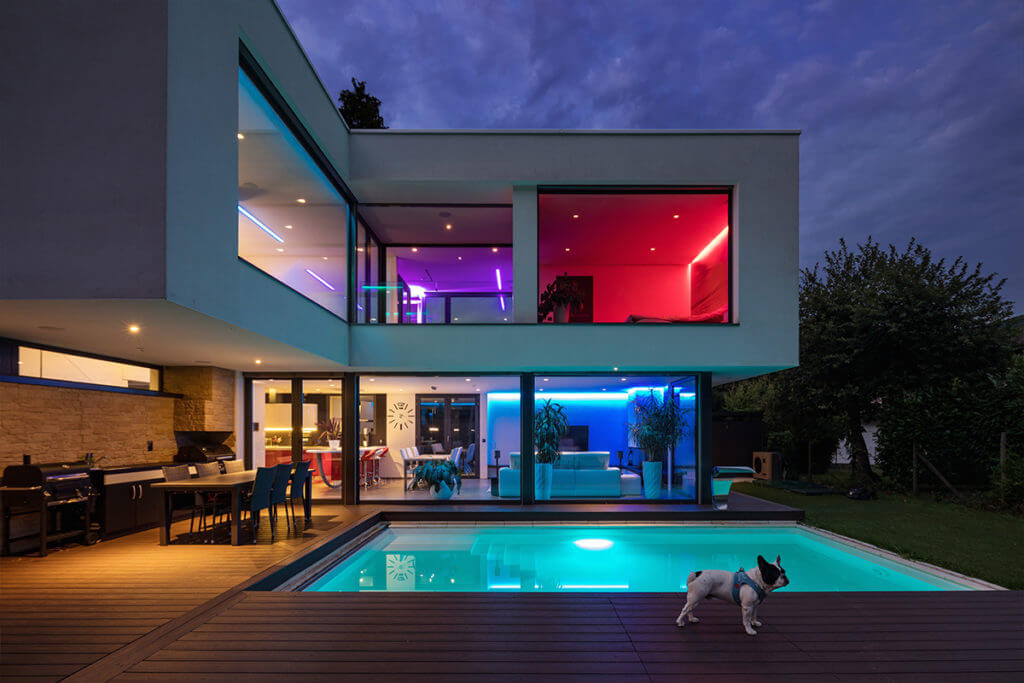
Residential: Whether you’re illuminating a large room or casting light over your outdoor patio for those late-night summer barbecues, wide beam angles have you covered. It spreads light generously, like butter on toast—perfect for when you need even illumination across an entire area.
Commercial: For conference halls or other big commercial spaces, wide beam angles step up to the plate. They provide soft, even lighting without creating dark corners or awkwardly spotlighting a random piece of furniture. You want everyone to see everything, and wide beams make sure that happens.
Very Wide Beam Angle (Over 130°)
For those “bigger than life” moments when you need all-encompassing light.
Residential: If you’re looking to flood your garden or driveway with light, a very wide beam angle is your go-to. It’s not about subtlety here—it’s about maximum coverage. Perfect for making sure your outdoor areas are as bright as a summer’s day, even at midnight.
Commercial: Need to light up a parking lot or keep the streets safe at night? Very wide beam angles provide full-area coverage, ensuring no corner is left in the dark. Whether it’s for street lamps or parking lots, these beams are designed to flood large outdoor areas with light.
Super Narrow Beam Angle (~10°)
This is the spotlight of all spotlights. The kind of beam angle that says, “Look at me, I’m important!”
Residential: If you’re going for that gallery feel at home, super narrow beam angles are the way to go. Perfect for shining a focused light on a specific art piece or an impeccably chosen piece of furniture, it brings all the drama to the space without overwhelming it. Think of it as your personal lighting assistant for showcasing your prized possessions.
Commercial: Jewelry stores and galleries love a super narrow beam angle. Why? Because it makes every diamond sparkle and every piece of art pop. With a beam this narrow, you’re giving serious attention to the subject, whether it’s a sparkling necklace or a centuries-old sculpture.
Extra Wide Beam Angle (~150°)
When you need to light up a lot of space, extra wide beam angles have your back.
Residential: If you’re planning to throw a backyard bash or want to make your pool area look like a five-star resort, extra wide beams are your ticket to ambient lighting nirvana. It lights up large areas without harshness, perfect for those who enjoy entertaining under the stars.
Commercial: Stadiums, concert halls, and massive event spaces need lighting that covers it all. Extra wide beam angles are the unsung heroes of these arenas, casting light over vast crowds and making sure everyone can see the action, whether it’s a goal, a guitar solo, or the grand finale.
There you have it—real-life beam angles doing their thing, from tiny closets to stadiums filled with thousands. Light wisely, my friends!
Conclusion
Ah, beam angles—the unsung heroes of lighting. By now, you’re practically a lighting connoisseur, ready to conquer the world of illumination one perfectly lit space at a time. But before you go swapping out bulbs like a pro, let’s take a quick look back at the highlights of your newfound beam angle expertise.
Recap on Understanding and Using Beam Angles
So, what did we learn? Beam angles are more than just numbers on a light bulb box. They control the spread of light, determining whether your space will look like a cozy nook or a fully illuminated stage. Whether you’re working with a narrow beam to highlight that masterpiece hanging on your wall, or going for a wide beam to light up the whole living room, understanding beam angles is key to getting the vibe just right.
Wide Beam Angles for Well-Lit Spaces; Narrow for Focused Areas
It’s all about balance. Wide beam angles are the go-to for those open, inviting spaces where you want everything bathed in a soft glow—think living rooms, dining areas, or your impressive backyard patio. Narrow beam angles, on the other hand, are the unsung spotlight specialists. They’re perfect for drawing attention to specific areas or objects, giving them the spotlight they deserve—like your favorite piece of art or that stylish new chair.
Rely on Experts for Complex Lighting Setups
Now, if you’re feeling a little overwhelmed with the idea of lighting up a stadium or designing the perfect ambiance for your restaurant, don’t fret. When things get complicated—like choosing the right mix of beam angles for a vast commercial space—it’s okay to call in the experts. They live for this stuff. Whether it’s designing lighting for an office, gallery, or warehouse, the pros will know how to make your space shine in all the right ways.
In the end, lighting isn’t just about brightness—it’s about direction, coverage, and atmosphere. And now that you’ve unlocked the secret world of beam angles, the power to create your perfect lighting environment is in your hands. Shine on!
FAQ
How do beam angles impact different types of light bulbs (LED, Halogen, etc.)?
Different types of light bulbs, like LEDs and halogens, can have varied beam angles. LED lights typically offer more flexibility, with a wide range of beam angles available. Halogen bulbs usually have narrower beam angles, making them better for focused lighting.
Can I adjust the beam angle of a light fixture after installation?
In some cases, yes. Adjustable light fixtures, such as track lighting or certain recessed lights, allow you to modify the beam direction, though the angle of spread remains the same. For true angle adjustment, you would need to switch to a different bulb with your desired beam angle.
How does beam angle affect the color temperature of lighting?
While beam angle doesn’t change the color temperature of the light, it can influence how that color is perceived. Narrow angles tend to intensify the light, making cool temperatures feel crisper, while wide angles diffuse the light, giving warmer tones a softer glow.
Do beam angles affect the longevity of a light bulb?
Beam angles themselves don’t directly affect a bulb’s lifespan, but improper use (e.g., using a narrow beam for general lighting) may cause the bulb to work harder to light an area, potentially leading to overheating in some cases, especially in enclosed fixtures.
Can beam angle affect the brightness of a room?
Yes, beam angle impacts perceived brightness. A narrow beam concentrates light in one spot, making that area appear brighter, while a wide beam spreads the light, making the room feel evenly lit but less intense in any one spot. The total brightness (measured in lumens) stays the same, but the distribution changes.
How does the beam angle affect shadow formation in a room?
The beam angle can greatly influence shadows. Narrow beam angles create more pronounced, sharper shadows due to the concentrated light source, while wider angles produce softer, more diffused shadows, resulting in a more even light spread across the room.
What is the difference between beam angle and field angle?
The beam angle measures the central, most intense portion of the light (usually where the intensity falls to 50%). The field angle, on the other hand, measures the full spread of light where intensity drops to 10%, giving you a broader view of the light’s total coverage.
Do I need different beam angles for different ceiling finishes (e.g., matte vs. glossy)?
Yes, the type of ceiling finish can affect how light is reflected. Glossy surfaces reflect more light, so using a narrow beam angle can create unwanted glare. Matte ceilings diffuse light better, so wide beam angles can offer a softer, more evenly distributed illumination.
How do beam angles influence lighting in rooms with mirrors or glass?
Mirrors and glass can reflect light, so using wider beam angles in rooms with reflective surfaces can lead to excessive brightness and glare. Narrower beam angles are often preferable to maintain focus and prevent too much light from bouncing around the space.
Can I use beam angles to create specific lighting zones in an open-plan space?
Yes, beam angles are perfect for creating distinct lighting zones in open-plan spaces. Narrow angles can highlight task areas like dining tables or reading nooks, while wider angles can provide general lighting for communal areas, helping define spaces without walls.
